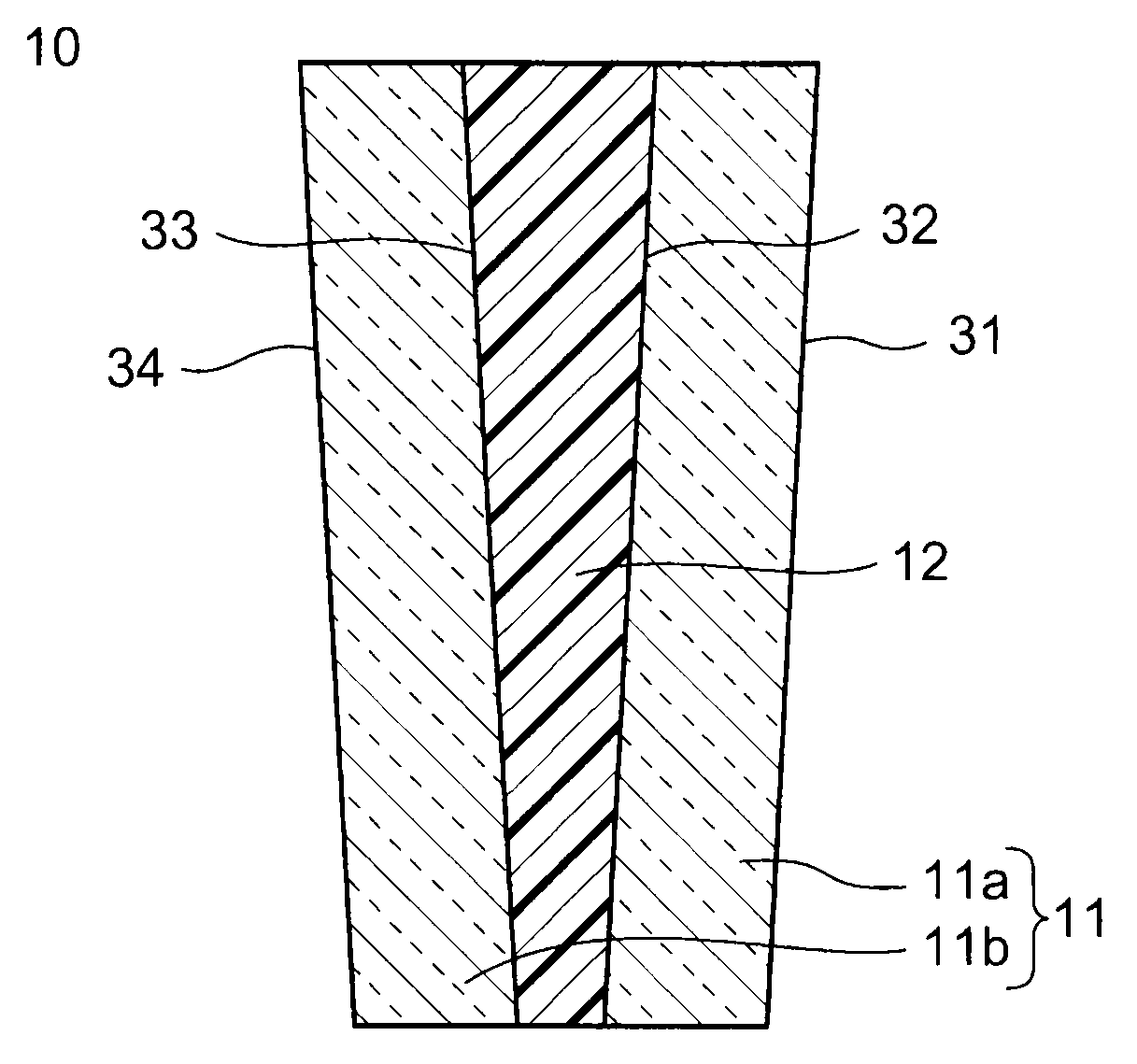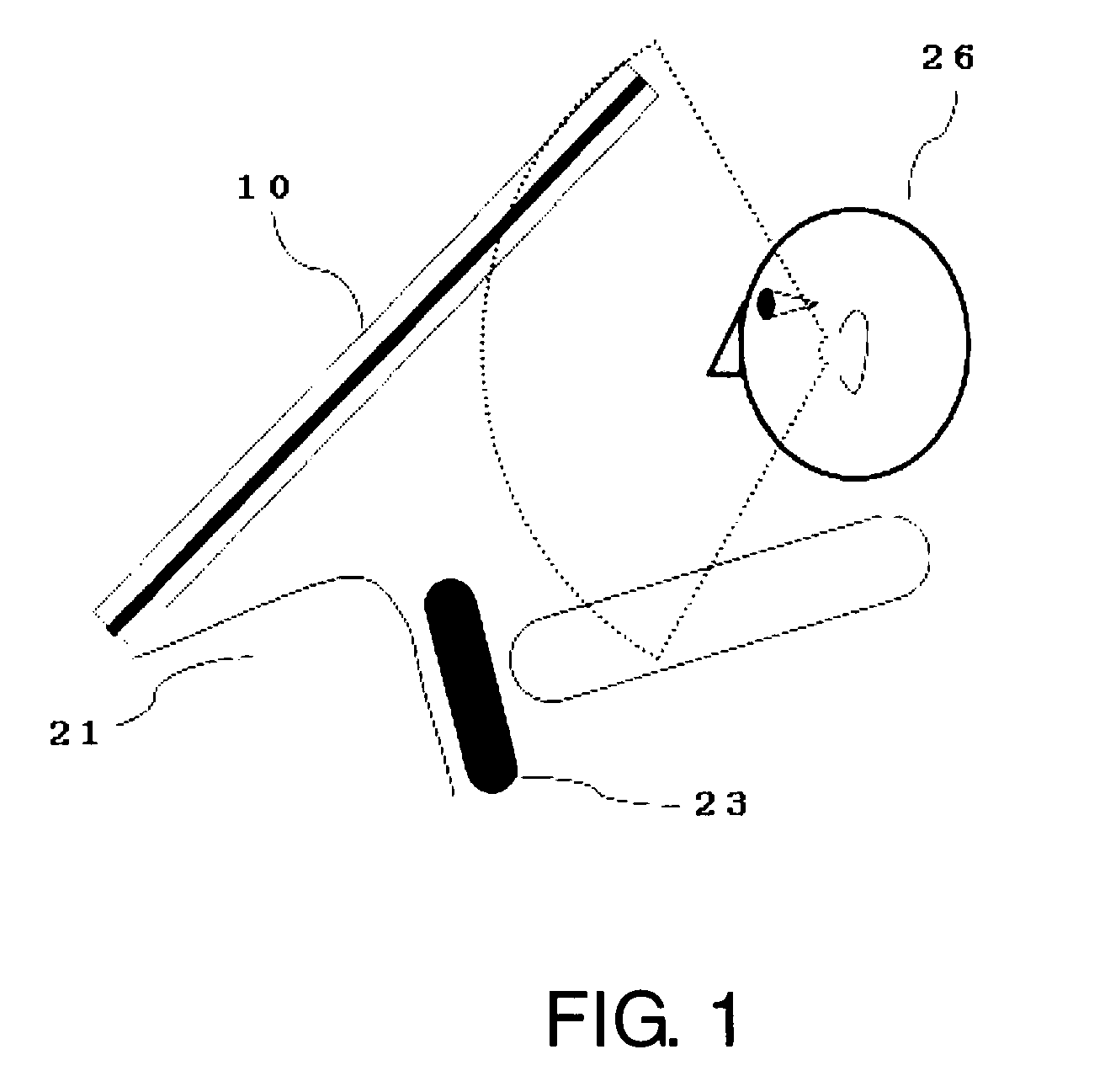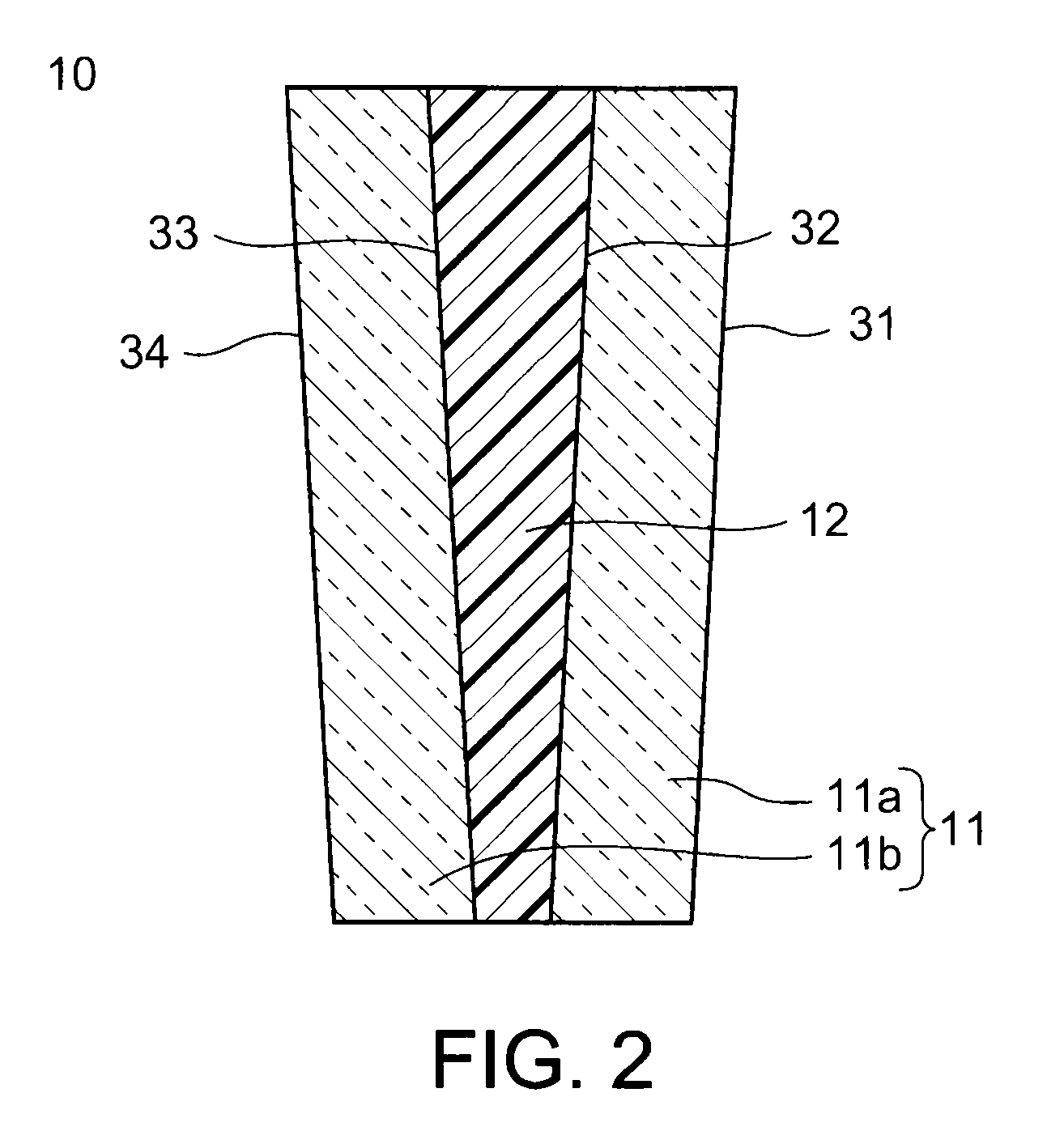Laminated glass for vehicle
a technology of laminated glass and automobiles, applied in the field of laminated glass, can solve problems such as distorted see-through images, and achieve the effects of reducing the weight of automobiles, increasing the thickness of glass sheets, and uniform acoustic preventing performan
- Summary
- Abstract
- Description
- Claims
- Application Information
AI Technical Summary
Benefits of technology
Problems solved by technology
Method used
Image
Examples
first embodiment
[0072]FIG. 1 is a schematic view showing an example of the construction of a laminated glass according to the present invention that is used as an windshield for automobiles, and FIGS. 2 and 3 are schematic cross-sectional views each showing an example of the construction of the laminated glass.
[0073]As shown in FIG. 1, a windshield 10 is attached to the front face of a vehicle (automobile) in a state that the windshield 10 is tilted so that its upper side portion shifted backwardly. A passenger (a driver) is seated on a seat (not shown) located in the rear side of a steering wheel 23 disposed in the vicinity of a dashboard 21. As a result, the upper side portion of the windshield 10 becomes closest (shown as a broken line) to the passenger's head (ears) sensing a sound.
[0074]As shown in FIG. 2, the laminated glass 10 is constituted by two curved glass sheets 11a and 11b and an interlayer 12 made of resin sandwiched between them. The thickness of the glass sheets 11 are each uniform...
second embodiment
[0105]FIG. 6 is a cross-sectional view showing another example of the construction of a laminated glass according to the present invention. As shown in the figure, the interlayer 12 may be provided with a shade functional region 15. The shade functional region is a region that is so-called shade band in which the visible light transmittance is lowered, and which can be formed by mixing a colorant into an interlayer 12. Further, such a shade functional region can also be formed by coating or printing a surface of interlayer with a colorant.
[0106]The shade functional region 15 is usually formed in a band-shaped region along the upper side of a windshield. At this time, the shade functional region may be formed to have a uniform visible light transmittance in its entire region. Further, dot-shaped patterns of colorant may be provided in the shade functional region to form a shade band. Further, a gradation may be provided in the shade functional region from the upper side of the interl...
PUM
| Property | Measurement | Unit |
|---|---|---|
| thickness | aaaaa | aaaaa |
| thickness | aaaaa | aaaaa |
| thickness | aaaaa | aaaaa |
Abstract
Description
Claims
Application Information
 Login to View More
Login to View More - R&D
- Intellectual Property
- Life Sciences
- Materials
- Tech Scout
- Unparalleled Data Quality
- Higher Quality Content
- 60% Fewer Hallucinations
Browse by: Latest US Patents, China's latest patents, Technical Efficacy Thesaurus, Application Domain, Technology Topic, Popular Technical Reports.
© 2025 PatSnap. All rights reserved.Legal|Privacy policy|Modern Slavery Act Transparency Statement|Sitemap|About US| Contact US: help@patsnap.com



